Everything Outside Is Secretly Out to Poison You: A Look at Biological Toxins and Venoms
Posted on 10/31/19 by Madison Oppenheim
Welcome back to yet another episode of "Madison is unhealthily and creepily obsessed with poisons!" Today's starring cast consists of microbial toxins, phytotoxins, and zootoxins. Grab a snack and strap in.
In the medical field, it is common to specify the type of poison as toxic or venomous. A poison (which we covered last time) enters the body via ingestion, inhalation, or absorption through the skin. A venom is a specialized type of poison that is actively injected via a bite or sting. It requires a wound to enter the body since it consists of both small and large molecules. Toxins (which can either be ingested or inhaled) are poisonous substances produced within living cells or organisms. They act by changing the normal metabolism of cells or by destroying them.
Microbial Toxins
Microbial toxins are produced by organisms in the domain Bacteria and in the kingdoms Protozoa and Fungi (domain Eukarya). If you need a quick refresher on taxonomy, the (main) hierarchy is as follows: Domain, Supergroup, Kingdom, Phylum, Class, Order, Family, Genus, and Species. At the top are the three domains of life which include Bacteria, Archaea, and Eukarya.
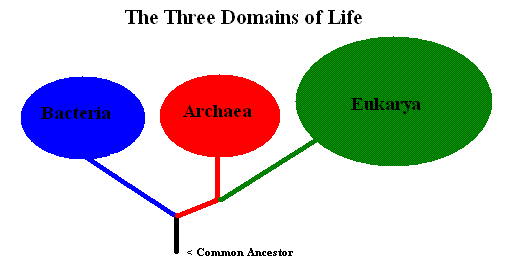
Image from C3lin.
Within the eukaryotes (organisms with a true nucleus) we have seven supergroups: Discoba, Archaeplastida (kingdom Plantae: land plants and relatives), Stramenopila, Alveolata, Amoebozoa, Rhizaria, and Opisthokonta (kingdoms Animalia and Fungi). If you haven't taken a biology course in a while, you might not be familiar with the supergroup classification but it's important because it establishes spots for protists: eukaryotes that are (generally) unicellular and cannot be classified as animals, plants, or fungi.
Bacterial Toxins
Many bacterial toxins are proteins and can be liberated during lysis (cell death). The main mechanism of action of bacterial toxins is combining with specific membrane receptors to penetrate the cell membrane and enter.
The toxin found in Vibrio cholerae (the bacterium responsible for cholera), works by increasing intracellular cAMP, a derivative of ATP used for intracellular signal transduction. The diphtheria toxin found in Corynebacterium diphtheriae inhibits protein synthesis, a classic move.
Most toxins act on the target cells they're bound to, but for the tetanus toxin from Clostridium tetani, it ascends up the axons to reach more distant structures. It binds to the presynaptic membrane of the neuromuscular junction and is internalized and transported to the spinal cord, where it causes paralysis by blocking neurotransmitter release. Stay up to date on your vaccines, folks.
Botulinum toxin (yes, as in Botox) produces similar effects but through a different mechanism of action. It acts at the periphery by inhibiting acetylcholine release at the neuromuscular junction, causing flaccid paralysis. It’s the most potent toxin we know of.
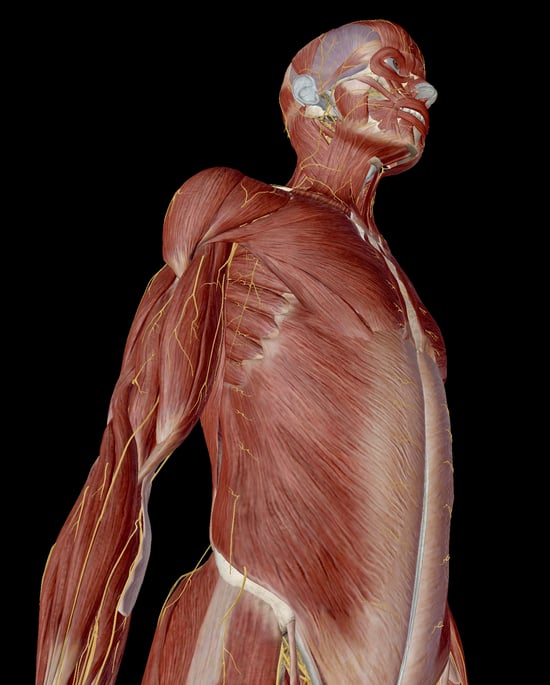 The muscular and nervous systems. Image from Human Anatomy Atlas 2020.
The muscular and nervous systems. Image from Human Anatomy Atlas 2020.
Cyanobacteria, also known as blue-green algae (which are NOT plants), are one of the most primitive organisms; they have extreme temperature tolerances. They’re known to cause severe poisoning, produce chronic diseases like cancer, and even lead to death. The hepatotoxic cyanotoxins mainly inhibit protein phosphatases (enzymes that attach phosphate groups to proteins); the neurotoxic ones work by irreversibly inhibiting acetylcholinesterase and blocking sodium channels in nerve axons; and the dermatotoxic cyanotoxins are inflammatory and GI irritants, as well as potent tumor promoters via potentiation of protein kinase C (important in signal transduction).
Mycotoxins
Fungi are members of the Kingdom Fungi (Eucomycota). Toxic microfungi are either in class Ascomycetes (sac fungi/yeasts) or class Deuteromycetes (imperfect fungi—no, not because they're like misshapen or something—fungi with no known sexual reproductive stages). Toadstools on the other hand, are the larger toxic mushrooms and are mostly members of the class Basidiomycetes (club fungi).
Certain fungi's ability to produce intoxication has long been known. Ergot (Claviceps purpurea), is probably the most infamous. It's a disease of rye and other cereals characterized by black, elongated fruiting bodies. Ergotism, the poisoning produced from eating food contaminated with ergot, typically results in headache, vomiting, diarrhea, and gangrene due to severe vasoconstriction. Bye-bye fingers and toes! It also causes vasospasm which can lead to acute coronary syndrome, bowel infarction, renal infarction, visual disturbances, and stroke. The ergot alkaloids (responsible for poisoning) interact with all known 5-HT1 and 5-HT2 (serotonin) receptors, increasing intrasynaptic serotonin activity in the brainstem's neurons.
In 1960 England, a disease called Turkey X erupted, resulting in the discovery of aflatoxins, some of the most potent hepatic cancer agents known. The main fungi that produce aflatoxins are the Aspergillus species (which love peanuts btw). Aflatoxin B1 exerts its effects after converting to a more reactive compound that can form derivatives with both DNA and RNA. It alters guanines in liver cell DNA, causing a mutation in the tumor suppressor gene p53, leading to hepatocellular carcinoma (HCC).
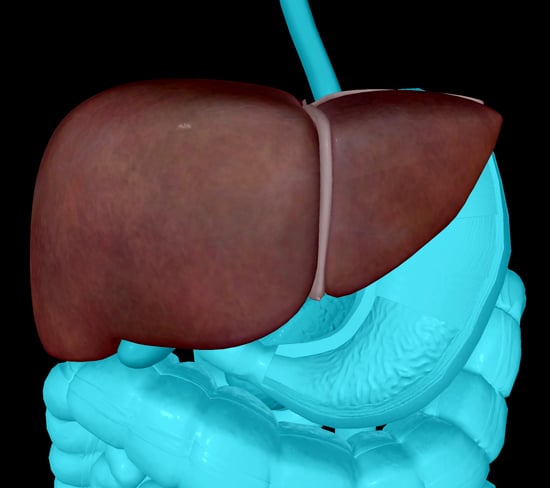 The liver. Image from Human Anatomy Atlas 2020.
The liver. Image from Human Anatomy Atlas 2020.
Most deaths attributed to mushroom poisoning result from eating members of the genus Amanita. The types of poisoning vary greatly depending on the species, but many include severe GI disturbances, liver damage, convulsions, and hallucinations.
Protistan Poisons
Have you ever gone to a beach expecting crystal clear waters only to be disgustingly disappointed by red blooms of "seaweed"? Red tide refers to high concentrations of dinoflagellates (supergroup Alveolata).
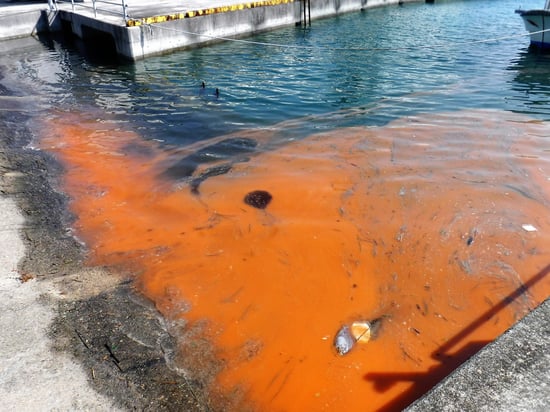 Unaltered image depicting red tide from melvil.
Unaltered image depicting red tide from melvil.
During blooms, large numbers of toxic dinoflagellates may be ingested by shellfish, accumulating in their digestive glands. Going up the food chain, we get to humans, who in turn may be poisoned, causing diseases like paralytic shellfish poisoning (PSP), amnesic shellfish poisoning (ASP), ciguatera fish poisoning, etc.
PSP begins with tingling and gradually escalates to GI upset and muscular paralysis. And guess what, there's no antidote so basically you've got to just follow local public-health quarantine regulations and hope they know what they're doing. Saxitoxin is the most well-known of the PSP toxins; it inhibits sodium ion channel permeability by blocking a site near the opening. Since Na+ ions can't pass through the membrane of neurons, there's a widespread blockade of impulse generation in peripheral nerves and skeletal muscles. Isn't paralysis just the best?!
 Image depicting action potentials from A&P 6.
Image depicting action potentials from A&P 6.
Phytotoxins
Plant poisons, or phytotoxins, are mainly from angiosperms (flowering plants). Plants (as well as animals, bacteria, and fungi) contain what's called secondary metabolites: molecules that are nonessential for cell structure or growth. The categories include phenolics (antioxidants with intense flavors and smells, such as vanilla and chocolate), alkaloids (bitter tasting molecules for defense, such as caffeine, nicotine, and morphine), terpenoids (substances with intense smells and colors, found in cinnamon, mint, and THC), and polyketides (chemical weapons, such as penicillin and tetrodotoxin). Take your best guess as to which of these we're going to focus on today.
Toxalbumins, highly toxic protein molecules produced by only a small number of plants, disable ribosomes, thereby inhibiting protein synthesis.
Ricin (as featured in Breaking Bad) is a toxalbumin from the castor bean. It's extremely toxic. It only takes as few as 5-10 µg/kg to kill. That's like 600x less than the mass of 1 single grain of sand. In case you don't believe me: 1 grain of sand is 4.4 mg, convert that to micrograms and you get 4,400, divide by 7 (a value between 5 and 10) and you get 628.6). It's so powerful that obviously it was capitalized upon. Both the US government and the Soviet Union weaponized it; surprised?
The ricin toxin A chain has the ability to inactivate approximately 1,500 ribosomes per minute. Even a single molecule of ricin in the cytosol can lead to cell death. Want to hear the fun symptoms of poisoning? There's nausea and vomiting (obviously), diarrhea, hematemesis (vomiting blood), and melena (bloody stool). Then you get spleen, liver, and kidney necrosis. Symptoms may progress to seizures, shock, organ failure, pulmonary edema, and lastly, respiratory failure.
Zootoxins
Venomous animals run amok throughout all of kingdom Animalia. The only group seemingly exempt would be birds (class Aves). There are several categories: oral toxins, parenteral poisons (venoms), and crinotoxins (those produced by a specialized gland and released into the environment). Not much is known about that last group yet.
Oral zootoxins are mainly small molecules, whereas venoms are larger—usually proteins. Venoms, produced by specialized glands, are injected by a mechanical device that's able to penetrate the victim's flesh.
Stinging animals can be found in the phyla Cnidaria, Mollusca, Arthropoda, Echinodermata, and Chordata (classes Chondrichthyes, Osteichthyes, and Reptilia).
Cnidarians ("jellyfish," corals, sea anemones, etc.) have specialized stinging cells called cnidocytes that explosively discharge upon contact to inject potent and rapidly-acting venom into the victim. The fluid-filled capsules (cnidae) contain nematocysts that can shoot out with enough force to pierce an arthropod shell at a pressure greater than seven billion Pascals (roughly equivalent to a bullet fired from a gun); it's the fastest process known to man. The toxin in the sea wasp Chironex fleckeri is associated with potent hemolytic activity and pore formation in erythrocytes (red blood cells) as well as nociception (pain), inflammation, dermonecrosis, cardiovascular collapse, and lethality.
In terms of mollusks, there are numerous toxic animals. For example, the cone snails (genus Conus) contain conotoxins, and the blue-ringed octopus (genus Hapalochlaena) and pufferfish (family Tetraodontidae) carry tetrodotoxin (TTX).
TTX is a sodium channel blocker that inhibits action potentials and prevents the nervous system from carrying messages and thus muscles from flexing in response to nervous stimulation. The lethal dose of TTX for humans is roughly 6.26 mg/kg. The Japanese delicacy “fugu” (pufferfish), can be prepared only by certified chefs with extensive training as the TTX accumulates in the organism, leaving the consumer susceptible to poisoning if the dish is incorrectly prepared.
Conotoxins come in a wide variety and each target a different type of ion channel, transporter, or receptor localized at the neuromuscular system of its victim. A single cone snail produces over 100 individual toxins whereas most venomous vertebrates (ie. snakes and arthropods) only produce one or a few poisons. Signs and symptoms of exposure to a conotoxin include faintness, ptosis (drooping eyelids), poor coordination, absent gag reflex, paresthesias (abnormal sensations like burning or tingling), double vision, difficulty swallowing, and respiratory arrest.
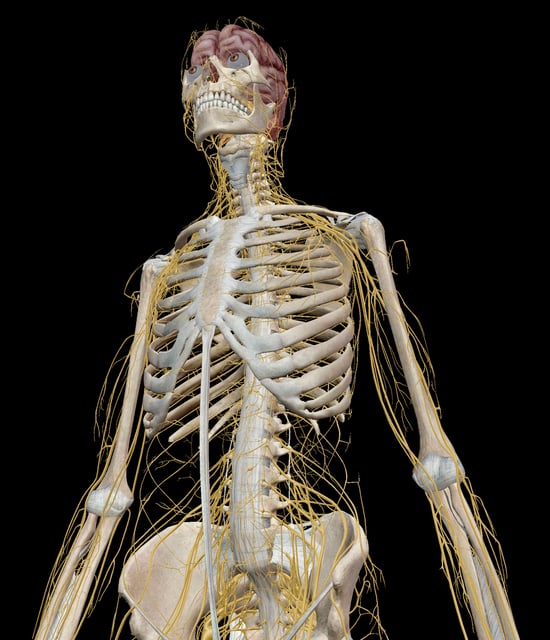 The nervous system. Image from Human Anatomy Atlas 2020.
The nervous system. Image from Human Anatomy Atlas 2020.
No specific antidotes are available; cool! In addition to their potential as biological weapons; conotoxins are also used in healthcare. The very first marine pharmaceutical, Ziconitide (brand name Prialt), was derived from Conus magnus w-conotoxin MVIIA and has been approved by the FDA for treating intractable pain (chronic pain with no known cure), so at least that's something.
As I mentioned above, there are many groups of toxic and venomous animals, and if I included all of them it would take you until like next week to finish reading. But if you're a nerd like me and interested in learning more, check out some of the resources I used below.
Be sure to subscribe to the Visible Body Blog for more anatomy awesomeness!
Are you an instructor? We have award-winning 3D products and resources for your anatomy and physiology course! Learn more here.
Additional Resources:
- Types of Poison: https://www.britannica.com/science/poison-biochemistry/poisons-of-biological-origin
- Bacterial Toxins: https://www.ncbi.nlm.nih.gov/pubmed/3281562
- Tetanus and Botulinum Neurotoxins: https://www.ncbi.nlm.nih.gov/pmc/articles/PMC1692495/
- Cyanobacteria and Cyanotoxins: https://www.ncbi.nlm.nih.gov/pmc/articles/PMC3813918/
- Ergot: https://toxnet.nlm.nih.gov/cgi-bin/sis/search/a?dbs+hsdb:@term+@DOCNO+1943
- Aflatoxins: https://www.ncbi.nlm.nih.gov/pubmed/9595771
- PSP: https://www.whoi.edu/science/B/redtide/illness/psp.html
- Ricin: https://www.ncbi.nlm.nih.gov/books/NBK441948
- Chironex fleckeri: https://www.ncbi.nlm.nih.gov/pmc/articles/PMC3931041
- TTX: https://toxnet.nlm.nih.gov/cgi-bin/sis/search/a?dbs+hsdb:@term+@DOCNO+3543
- Cone snails: https://pdfs.semanticscholar.org/c058/d3408325b1934c8b2f4370bd07140ef0f028.pdf
- Conotoxins: https://www.ncbi.nlm.nih.gov/pmc/articles/PMC5666421/



